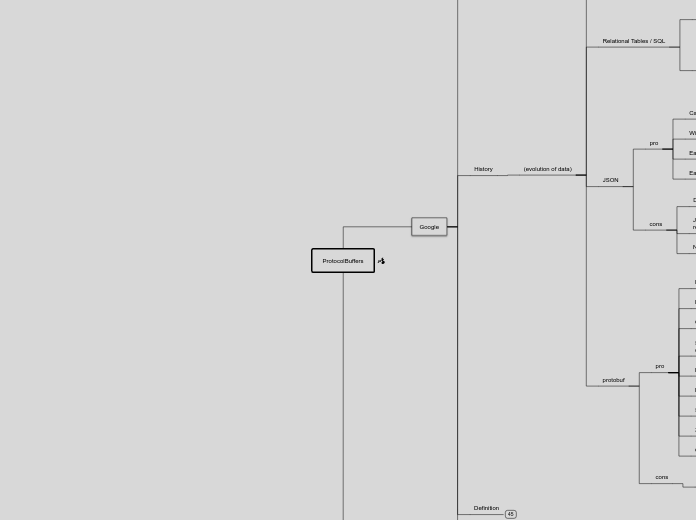ProtocolBuffers
History
(evolution of data)
csv
pro
Easy to read
Easy to parse
Easy to make sense of
cons
Data Type has to be inferred : validation is an issue
Parsing is tricky for data that contains commas
Column names aren't strictly enforced : may or may not exist
Relational Tables / SQL
pro
Data is fully typed
Data fits in a table
cons
Data has to be flat to fit in a table
Database has varying definition : working across different databases are difficult
JSON
pro
Can take any forms (arrays, nested elements)
Widely accepted across the web
Easily read by any language
Easily shared over the network
cons
Data has no schema enforcing
JSON objects can be large in size because of repeated keys
No comments, metadata or documentation
protobuf
pro
Human readable
Data is fully typed
Compressed automatically
Schema is needed to generate code and read the data
defined by .proto text file
Documentation can be embedded in the schema
Data can be read across all programming languages
Schema can evolve over time in a safe manner
3-10x smaller and 20-100x faster than XML
Code is generated automatically for you
cons
Can't open in text editor because it's compressed and serialized
Definition
Tutorial
C#
Protocol Buffer Basics: C#
Define message formats in a .proto file.
Use the protocol buffer compiler.
Use the C# protocol buffer API to write and read messages.
Defining your protocol format
Compiling your protocol buffers
Niantics
pgo
game_master.proto
message
GameMasterClientTemplateProto { ... }
// Items client attributes shared from GameMasterTemplateProto. This is the client version of the game master tuning data for items.
holoholo_shared.proto
